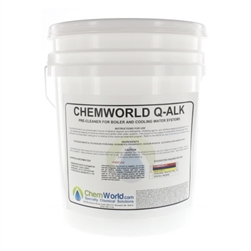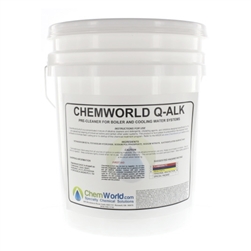Answer
Aug 16, 2021 - 11:33 AM
GENERAL
Prior to putting a new boiler into service or returning one to service after it has been repaired and/or contaminated with oil or grease, it must be boiled out to remove these contaminants. Otherwise, they can cause operational problems such as foaming and/or priming, reduction of boiler efficiency and in severe cases, even tube failures. In many cases, boil out procedures are described in the operating manuals for the particular boiler. However, where they are not, the general procedure described below will suffice.
PREPARATION FOR CLEANING
Prior to any cleaning operation, the boiler should be opened and inspected to determine both the actual internal conditions with respect to deposits and to insure that any rags, tools, etc. inadvertently left by workmen have been removed. Gauge glasses should be replaced with temporary ones and then all bottom drains should be closed and handhole or manhole covers replaced (except where a top one is to be used for adding the cleaning chemicals and filling the unit). The steam valve from the unit must be closed and the vent(s) opened.
CLEANING PROCEDURE
Once the unit is prepared, the prescribed cleaning chemicals* should be added and the boiler filled with water to the top of the gauge glass. Where dry chemicals are used, they must be dissolved in a mixing tank prior to addition to the unit. It should then be fired on low fire to obtain mixing and circulation. When steam is flowing freely from the vent(s), these are then closed and the pressure is raised to 50% of the operating pressure (except for boilers operated at 15 psi or lower where the pressure may be raised to operating pressure). The pressure should then be maintained for 12-36 hours and during this period, the boiler should be blown down from the bottom by 1/2 the gauge glass every 2 hours, refilling to the top of the glass after each blowdown.
After the boil out procedure is completed, the boiler should be carefully cooled. When sufficiently cool, the vent(s) may be opened and the unit drained and thoroughly flushed with a high-pressure hose. After flushing, it should then be carefully inspected to insure the cleaning has been complete. Where severe deposits existed initially, it may be necessary to repeat the boil out to obtain proper results.
The boiler should then be closed and put in (or returned to) service or placed in wet or dry lay-up according to proper procedures when the unit is to be stored for any appreciable period of time.
*CHEMICALS
Typically, proprietary chemicals specifically recommended for boilout of boilers are formulated with a mixture of surfactants, caustic, a phosphate, chelating agents (for mill scale removal), and an embrittlement inhibitor. The Chemworld product for this application is Q-ALK BC. For product description and details, please see product data sheet.
Prior to putting a new boiler into service or returning one to service after it has been repaired and/or contaminated with oil or grease, it must be boiled out to remove these contaminants. Otherwise, they can cause operational problems such as foaming and/or priming, reduction of boiler efficiency and in severe cases, even tube failures. In many cases, boil out procedures are described in the operating manuals for the particular boiler. However, where they are not, the general procedure described below will suffice.
PREPARATION FOR CLEANING
Prior to any cleaning operation, the boiler should be opened and inspected to determine both the actual internal conditions with respect to deposits and to insure that any rags, tools, etc. inadvertently left by workmen have been removed. Gauge glasses should be replaced with temporary ones and then all bottom drains should be closed and handhole or manhole covers replaced (except where a top one is to be used for adding the cleaning chemicals and filling the unit). The steam valve from the unit must be closed and the vent(s) opened.
CLEANING PROCEDURE
Once the unit is prepared, the prescribed cleaning chemicals* should be added and the boiler filled with water to the top of the gauge glass. Where dry chemicals are used, they must be dissolved in a mixing tank prior to addition to the unit. It should then be fired on low fire to obtain mixing and circulation. When steam is flowing freely from the vent(s), these are then closed and the pressure is raised to 50% of the operating pressure (except for boilers operated at 15 psi or lower where the pressure may be raised to operating pressure). The pressure should then be maintained for 12-36 hours and during this period, the boiler should be blown down from the bottom by 1/2 the gauge glass every 2 hours, refilling to the top of the glass after each blowdown.
After the boil out procedure is completed, the boiler should be carefully cooled. When sufficiently cool, the vent(s) may be opened and the unit drained and thoroughly flushed with a high-pressure hose. After flushing, it should then be carefully inspected to insure the cleaning has been complete. Where severe deposits existed initially, it may be necessary to repeat the boil out to obtain proper results.
The boiler should then be closed and put in (or returned to) service or placed in wet or dry lay-up according to proper procedures when the unit is to be stored for any appreciable period of time.
*CHEMICALS
Typically, proprietary chemicals specifically recommended for boilout of boilers are formulated with a mixture of surfactants, caustic, a phosphate, chelating agents (for mill scale removal), and an embrittlement inhibitor. The Chemworld product for this application is Q-ALK BC. For product description and details, please see product data sheet.



